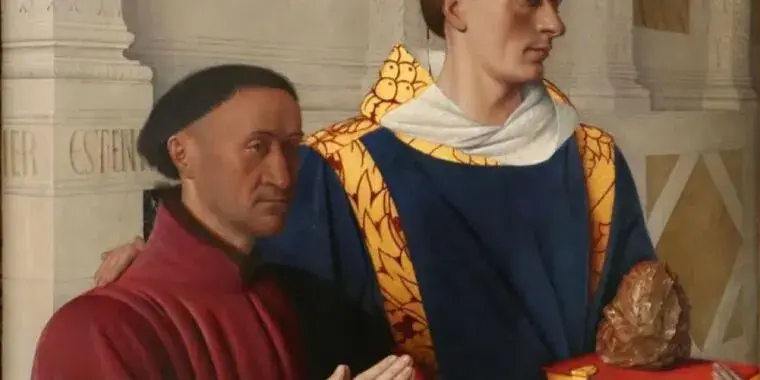- cross-posted to:
- hackernews@derp.foo
🤖 I’m a bot that provides automatic summaries for articles:
Click here to see the summary
Around 1455, a medieval French painter and miniaturist named Jean Fouquet painted a small diptych with two panels, one of which depicts St. Stephen holding a strangely shaped stone—usually interpreted as a symbol of the saint’s martyrdom by stoning.
The left panel depicts Etienne Chevalier, who served as treasurer to King Charles VII, clad in a crimson robe while kneeling in prayer.
Just last year, Monja Schünemann of Chemnitz University of Technology suggested that Fouquet painted the two panels so that folding them reveals a hidden image.
Past technological studies revealed that Fouquet had corrected the heads of both Chevalier and St. Stephen in such a way as to ensure that certain points in the painted image would meet up in a specific way when the hinged diptych was closed.
Co-author Steven Kangas, an art historian at Dartmouth, had long been fascinated by the jagged stone in the left panel because it looked like a prehistoric tool.
Rather, numerous recorded oral histories describe such objects as “thunderstones,” since it was believed they “shot from the clouds” whenever lightning struck the ground—although at least one 16th-century German scholar, Georgius Agricola, dismissed that popular belief.
Saved 67% of original text.


